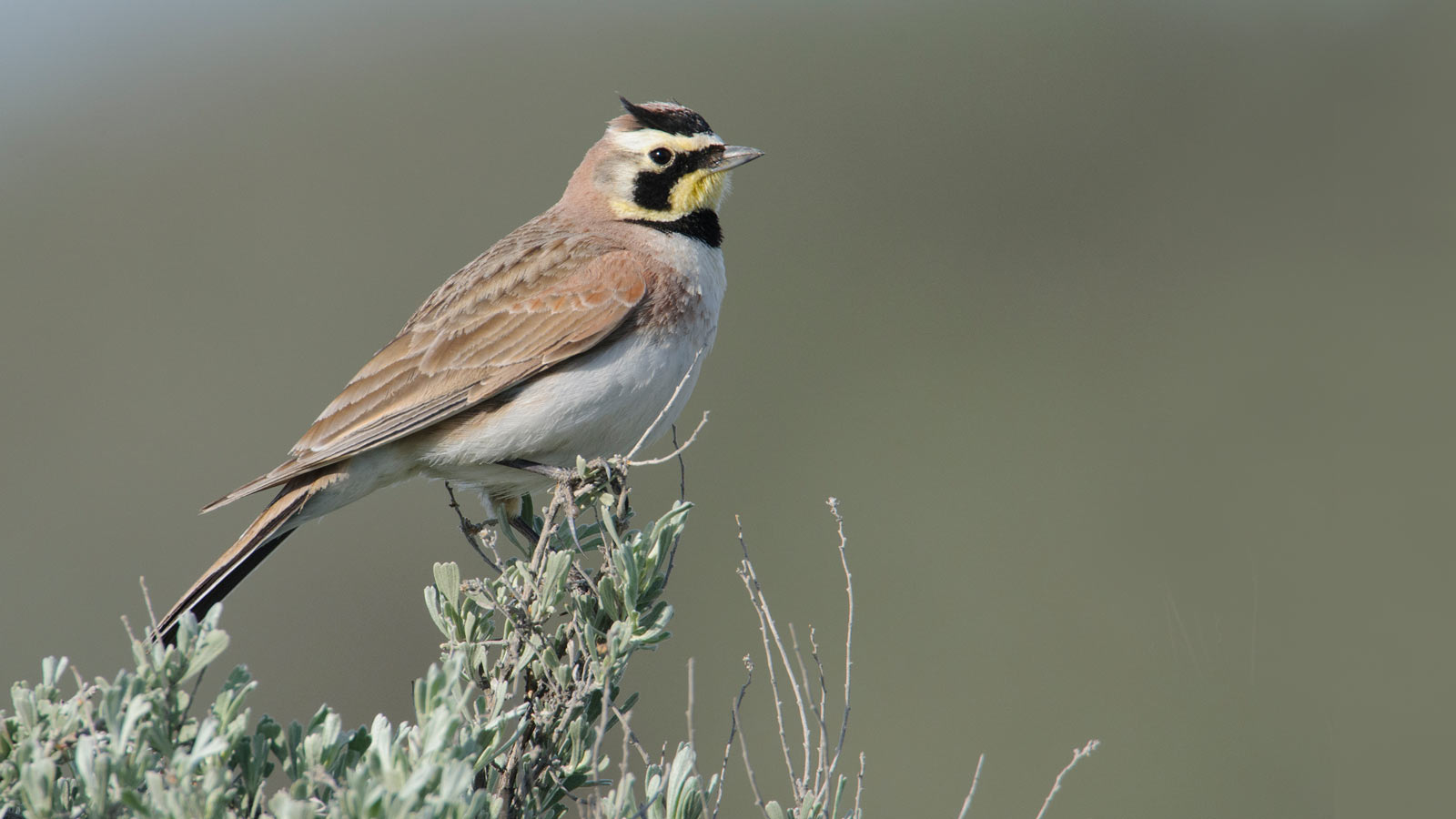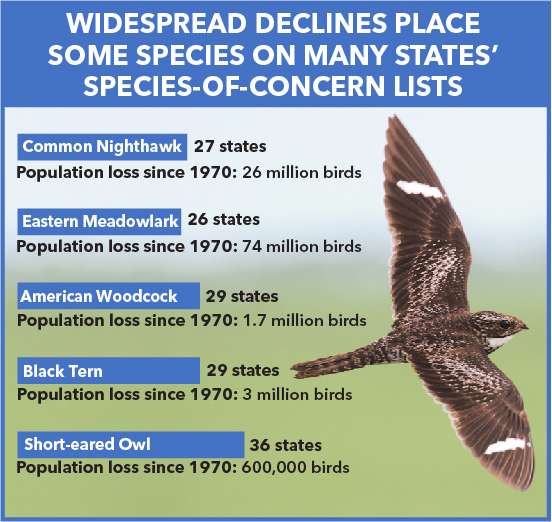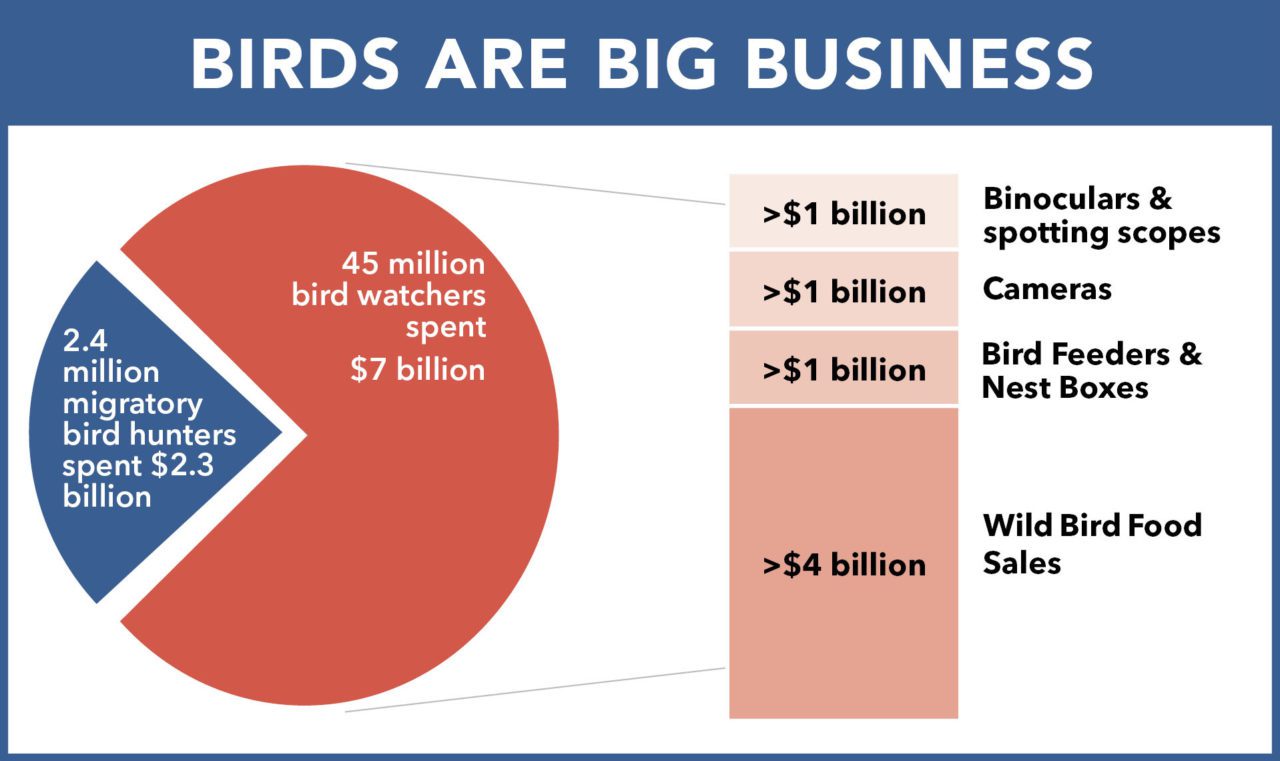Achieving Recoveries

State wildlife agencies are ready to act and save our birds, but our states can’t do it alone. Partnerships are key.
Every State Has a Wildlife Action Plan, But Needs Funding

America’s state and territorial fish and wildlife agencies have identified more than 12,000 species of greatest conservation need—including wildlife at risk of becoming endangered. Each state has developed a State Wildlife Action Plan, a science-based action plan to turn around declining populations.
- 56 fish and wildlife agencies (every state, territory, and the District of Columbia) have written action plans for every species of greatest conservation need, including 400+ bird species.
- Each plan includes voluntary, non-regulatory measures that are proven to prevent Endangered Species Act listings.
- Currently, our State Wildlife Action Plans receive less than 5% of the required funding needed for successful implementation.
Joint Ventures Multiply Conservation Dollars
With crucial funding through the U.S. Fish and Wildlife Service and locally driven management authority, states are partnering with federal agencies, nonprofit groups, corporations, and tribes on Migratory Bird Joint Ventures—regional conservation collaboratives with a track record of innovative, effective conservation models.
- More than 20 Migratory Bird Joint Ventures have restored and conserved 27 million acres of habitat in the lower 48 states and Alaska.
- Joint Ventures use a strategic business-planning model that emphasizes cost efficiency and voluntary, proactive conservation.
- Joint Ventures are a powerful conservation multiplier, growing every federal $1 into more than $30 in matching conservation funds.
The Answers to America’s Bird Crisis

Habitat loss is the leading driver of bird declines, which means bird declines are an indicator of much bigger environmental issues on the land. For example, damage to bird habitats also impacts drinking water quality. Federal and state governments can empower a triumphant recovery—for birds and landscapes—with actions that attack the roots of the problem.
The Cornerstones of Successful Conservation Policy. Three cornerstone conservation acts—the North American Wetlands Conservation Act, the Neotropical Migratory Bird Act, and the Conservation Title of the Farm Bill—are the key drivers of conservation action for birds. All require a stronger commitment to future funding.
The Proposal by the Blue Ribbon Panel on Sustaining America’s Wildlife. In 2016, a panel of business and conservation experts—chaired by former Wyoming Governor Dave Freudenthal and Bass Pro Shops founder John Morris—studied the wildlife crisis and recommended that $1.3 billion in existing federal revenue be redirected to State Wildlife Action Plans annually, with no cost impacts to taxpayers, consumers, or businesses.
A No-Net-Loss Grasslands Policy. Modeled after George H. W. Bush’s famous No-Net-Loss Wetlands policy, a similar grasslands policy would protect prairie, help declining grassland birds, and ensure the availability of grazing lands for ranching. In 2014, the U.S.A. lost more prairie acres than the Amazon lost rainforest. A No-Net-Loss Grasslands Policy would also protect the grassy buffer lands along waterways that provide natural filtration and protect drinking water quality.
Strategies to Minimize Direct Bird Kills. NABCI partners have developed strategies to reduce the anthropogenic (or human-caused) threats to birds beyond habitat loss, with proposals for addressing feral cat colonies on public lands, reducing collisions through bird-friendly building codes, and transitioning to green energy through bird-friendly wind and solar energy development.
